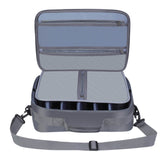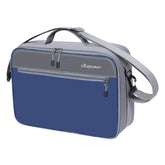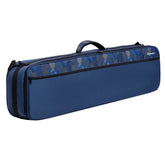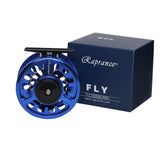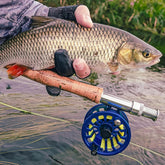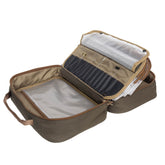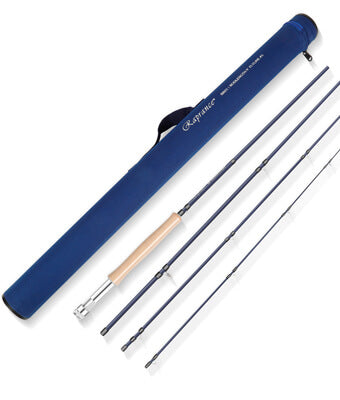Fly Line: Performance in Windy Conditions and Budget Options for Bass Fishing
The effectiveness of floating fly line in windy conditions can often be a topic of debate among anglers. I have found that floating fly lines can still perform well in breezy weather if chosen wisely and employed with proper techniques. Understanding how to manage your cast can make a significant difference in the outcome of your fishing experience.

As I explore budget-friendly options, I’ve discovered several floating fly lines that won’t break the bank yet deliver solid performance. These lines can be particularly advantageous for bass fishing, allowing for effective casting and presentation.
Another important consideration is the lifespan of a floating fly line. With proper care and maintenance, I’ve noticed that a good quality floating fly line can last several seasons. Investing in a line that’s durable and well-maintained pays off in the long run.
Fundamentals of Floating Fly Lines
Floating fly lines are essential for successful fly fishing, especially on still waters. Understanding their types, features, and sizing helps in selecting the most effective line for various fishing conditions.
Types and Features of Floating Lines
Floating fly lines come in a few key types, each with distinct features. Two popular types are:
-
Weight Forward (WF): This design has a heavier front taper, allowing for easier casting and better distance. The weight is concentrated at the front, which helps to turn over leaders and flies efficiently.
-
Double Taper (DT): This line is symmetrical, allowing for backcasting. It provides a gentle presentation and can be reversed for extended use as it wears down.
Each line also varies in taper profiles:
- Front taper: Ensures smooth casting and turnover.
- Rear taper: Aids in line control and tracking.
The material, often PVC, has characteristics like durability and buoyancy, making these lines ideal for various fishing scenarios.
Selecting the Right Size and Taper for Your Fly Line
Choosing the right size and taper for a floating fly line impacts casting and presentation. I consider the following factors:
-
Line weight: Match the line weight with the rod for optimal performance, typically ranging from 3 to 10, corresponding to different fish species and conditions.
-
Taper type: The taper affects casting distance and accuracy. For example, a short front taper is suitable for quick casts in tight spaces, while a long front taper aids delicate presentations.
I also pay attention to the floating capability. Lines designed specifically for floating include added buoyancy features, ensuring that they remain on the surface.
Understanding these fundamentals enhances my fly fishing experience by ensuring that I use the right tools for the conditions I encounter.
Floating Line Performance Factors
When using floating fly lines, several factors can significantly influence their performance, especially in challenging conditions. Understanding these performance factors enhances my casting effectiveness and helps in adapting to various fishing scenarios.
Advantages of Floating Lines in Windy Conditions
Floating fly lines provide unique advantages when fishing in windy environments. The buoyancy allows for better visibility of the fly, which can be crucial in turbulent conditions. With their ability to sit on the surface, floating lines help in achieving a natural presentation by minimizing the drag that often occurs with sinking lines.
The increased resistance of floating lines aids in line control. This becomes essential when gusts of wind threaten to alter the fly’s trajectory. Additionally, when casting against the wind, a floating line can help me maintain a straight line presentation, reducing the chances of the fly being blown off course.
Impact of Line Taper and Weight on Casting Accuracy
The taper and weight of my floating fly line play a pivotal role in casting accuracy. A line with a well-designed taper allows for smooth energy transfer during the cast, improving both distance and precision. Shorter tapers generally facilitate quicker loading, making them ideal for quick casts in changing conditions.
Choosing the right line weight is equally important. A heavier line might punch through the wind better, while a lighter line could be more susceptible to drifting. I often adjust my line selection based on the wind speed and direction to optimize my casting accuracy in challenging situations.
Sliding and Roll Casting Techniques with Floating Lines
In windy conditions, sliding and roll casting techniques become essential tools in my fly fishing arsenal. These methods allow me to present my fly without introducing excessive false casting, which can be disrupted by wind.
With a roll cast, I can utilize the energy in the line effectively while keeping my fly close to the water's surface. This technique is particularly advantageous when I need to avoid uprooting fish or spooking them with erratic movements.
When executed correctly, these casting techniques can improve my line control, allowing me to make accurate presentations even in gusty weather. Practicing these methods ensures that I stay prepared for any wind-related challenges that may arise.
Floating Fly Lines Across Fishing Scenarios
Floating fly lines are versatile tools tailored for different fishing situations. Understanding their performance in various contexts helps enhance the fishing experience and improve catch rates.
Budget-Friendly Floating Fly Lines and Their Performance
Finding an effective yet affordable floating fly line can be challenging. I recommend the Cortland 444 Peach as an excellent budget option. It provides decent casting distance and is suitable for various freshwater species.
Another contender is the Scientific Anglers Amplitude Grand Slam, though it may stretch the budget slightly. Its innovative design offers excellent shootability and performance in changing conditions.
When selecting a budget line, consider factors like line weight and taper. These attributes can significantly influence casting efficiency and presentation. Overall, affordable lines can deliver satisfying results when chosen wisely.
Bass Fishing with Floating Fly Lines
For bass fishing, using a floating line can be highly effective. I often opt for lines with a weight-forward taper, which improves casting accuracy and allows for precise presentations.
A popular choice among anglers is the Scientific Anglers Amplitude series. These lines are designed to help with quick turnover, making them ideal for targeting aggressive bass.
When targeting topwater species, strategic popping techniques with floating lines can provoke strikes. Being aware of local weather and water conditions helps me determine the best times to fish, increasing the chances of success.
Floating Lines for Targeting Steelhead and Salmon
When targeting steelhead and salmon, floating fly lines play a crucial role. Using the right line can match the behavior of these species effectively.
A heavier floating line aids in casting larger flies across rivers. Lines with a supple coating perform better in colder waters, ensuring they maintain flexibility, which is essential for good drift.
I often rely on lines rated for specific conditions, as they can greatly affect presentation. Additionally, considering the local water's depth and flow can inform the best line selection for these powerful fish.
Versatility of Floating Lines in Saltwater Environments
Floating fly lines are not limited to freshwater; they can be equally effective in saltwater settings. I find that using floating lines allows for dynamic presentations, targeting species such as tarpon and bonefish.
Opt for lines with a higher tensile strength to handle saltwater conditions. I personally recommend lines designed to float high, as they reduce drag and improve accuracy in casting against currents.
When fishing in saltwater, adjust your retrieve speeds based on the target species. A floating line can enhance the action of the fly, making it more appealing to saltwater inhabitants.
Maintenance and Longevity of Floating Fly Lines

I find that proper maintenance is crucial for extending the lifespan of floating fly lines. With the right care, my lines can last several seasons, especially when using high-quality options like Cortland 444 or Airflo. Here’s how to keep them in excellent condition.
Proper Care for Extending Fly Line Lifespan
To maintain my floating fly line, I always start with rinsing it in fresh water after each use. Salt and dirt can cause wear over time, so a simple rinse can prevent damage.
I also regularly clean my line using specific fly line cleaning solutions. Applying a small amount of this solution with a microfiber cloth ensures that I remove any grime without damaging the coating.
Storage is equally important. I keep my lines on a spool, avoiding sharp folds and kinks. Ideally, I store them in a cool, dry place away from direct sunlight. This care can significantly extend the life of my line, allowing me more time on the water.
When to Replace Your Floating Fly Line
Floating fly lines generally last between three to five years, but factors like usage and care impact their longevity. I monitor my line for discoloration, cracks, or loss of buoyancy. These signs indicate that it may be time for a replacement.
If I notice reduced casting distance or difficulty in achieving a good drift, these issues may stem from line deterioration. I also consider environmental factors; fishing in freshwater can be less harsh than saltwater, allowing for longer line life.
In some cases, I might replace my floating fly line sooner if I frequently fish with it in challenging conditions. Keeping an eye on these indicators ensures I get optimal performance from my gear while enjoying my time on the water.

